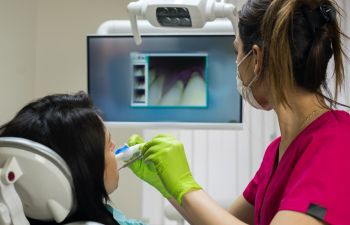
Dental implants are fast becoming the gold standard for restoring missing teeth. Individuals needing extra bone support for receiving a dental implant in the upper arch may be recommended for sinus lift surgery. This procedure involves moving the sinus membrane upward or lifting it so bone can be added to the space between the molars and premolars.
Why is a Sinus Lift Needed?
Individuals with strong, healthy bones do not necessarily need a sinus lift but when the area in which the implant will be placed has insufficient bone height, this procedure provides a solution. Bone loss can occur due to:
- Reabsorption of bone after tooth loss (this occurs when a tooth has been missing for a long time).
- Severe gum disease – periodontitis can cause the bone in the affected area to dissolve.
- Infected tooth – if you have a tooth that has developed an abscess, the infection may have spread to the bone and weakened it.
A sinus lift may also be required if your sinuses are too close to the jawbone.
Bone Augmentation
The bone used in the sinus lift can come from various places. The three most used types of bone used in this procedure are:
- Autogenous bone which comes from your body, usually from another area of your mouth if possible.
- Allogenic bone, which is sterilized bone from a cadaver.
- Xenograft, which is bone from a cow.
Your dental specialist will determine through examination and x-rays the best type of bone for your situation. Once the bone is put in place, it will need time to heal and integrate with the existing jawbone.
The procedure will begin with a numbing of the area in which the bone augmentation will be performed. Incisions will be made in the gum to expose the existing bone. A small area of the bone will be cut so that the sinus membrane can be lifted. This is a delicate procedure because care must be taken not to cut the sinus membrane.
Once the sinus membrane has been lifted, the bone graft materials will be applied to this area to hold the lift in place. When this step is completed, sutures are applied to close the incision in the gums.
Post-Surgery Care
In order to ensure the best possible healing environment, these recommendations should be followed:
- Refrain from smoking to allow optimal healing
- Clots need to form, so do not brush your teeth for the time recommended
- To ensure that the lift does not move out of place, avoid vigorous sneezing and blowing of the nose
- Do not use a straw since the sucking motion could dislodge clots
- Be sure to follow the directions for using antibiotics and take them as directed
- Use pain relievers for discomfort
You will be seen for a follow-up checkup in a week to ten days after the procedure. Your dental specialist will examine the surgery site and remove sutures if they have not dissolved on their own.
You can expect full recovery from this procedure in about six months. It will take at least this long for the sinus to heal and the donor bone to become integrated with the existing bone for the implant.
Be confident about your smile when you rely on the dental team at ConfiDENT for your dental care. Call us now to schedule your appointment.
Posted on behalf of
11550 Webb Bridge Way, Suite 1
Alpharetta, GA 30005
Phone: (770) 772-0994
Email: info@confident-alpharetta.com
Mon: Closed
Tue - Fri: 9am–5pm
Sat: 9am–4pm
422 Canton Rd
Cumming, GA 30040
Phone: (770) 406-8264
Email: Cumming@confidentsmiles4u.com
Mon - Thur: 8am–4pm
Fri: Closed
Sat: 9am–4pm
